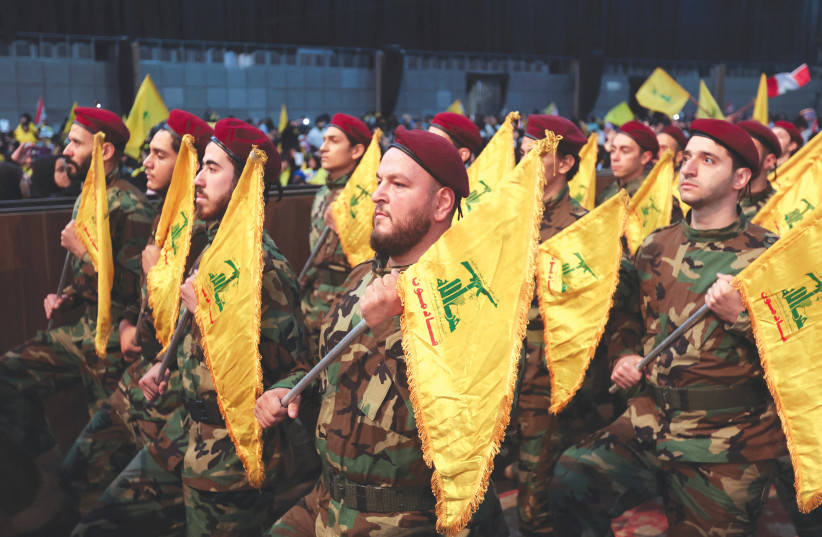If the worst happens, and Hezbollah rains down its full onslaught of rockets on Israel, including thousands of direct hits, Israel may need to manage the situation using local civilian drones, IDF Maj. (res.) Or Adar, Founder of “Local Drone Patrol,” said on Thursday.
Speaking at the UVID Dronetech Conference in Tel Aviv, Adar explained that in the nightmare scenarios where the sheer volume of a barrage of 150,000 Hezbollah rockets succeeds in getting thousands of hits on the home front, the IDF, police, and even the municipalities will not have the capacity to keep up with all of the hits and the damage they are causing.
Rather, in that case, the best way to get a situation assessment will be using local privately-owned citizens’ drones to record and perform surveillance of spots hit by rockets, said Adar.

According to Adar, shortly after the October 7 invasion, he started to see requests for help by civilians in areas that were still potentially in danger.
For example, on October 11, a woman from Lahish said that she and most of her community were holed up in their houses indefinitely, afraid that there might be more Hamas invaders hiding nearby, and were hoping someone could provide drones to perform surveillance in the area.
Adar said that he started to reach out to multiple circles of contacts and that within three days, 300 owners of drones had offered to “donate” using their drones to assist others with security situations.
It took some more time to organize the initiative and then to fulfill related regulations for operating drones, but before the end of October, the group’s drones were off to the races – or rather, off to assist with various crises.
One example of a crisis was when a rocket made a direct hit on a residence in Rishon LeZion.
The group used one of their drones to inform rescue workers exactly where the hit took place and provided rescue workers footage of the scene so they understood which parts of the structure they could enter to help, and which dangerous parts they needed to avoid.
Currently, the initiative has grown to 1,000 volunteers in 150 local authorities and has led to 3,000 drone flights to provide different forms of assistance.
Sometimes, the drones have even succeeded in providing security forces with advance warnings of dangers.
Also, at the conference, Jonathan Barkat, a combat soldier and entrepreneur, told about how he returned to Israel from the US shortly after October 7.
Barkat said that though he normally served as a drone operator for Maglan special forces, this time, he came to work with the paratroopers.
However, when he arrived at the base for Paratrooper Unit 55, he found that they had no drones, nor did they have any strategic plans for how to utilize drones.
According to Barkat, he quickly got approval from IDF Col. Oded Ziman to seek out and integrate the use of drones into the paratroopers' operations.
Within around six weeks, Barkat said he had raised one million dollars and purchased 135 commercial drones, which were then customized for the paratroopers' military use.
Some 100 soldiers were trained to use these drones, and the 55th Brigade became the first unit in the entire IDF infantry with access to drones all the way down to the platoon level.
From the first day he and his unit entered Gaza, they sent a drone into a structure where normally they would have just sent a bunch of troops, and the drone found two large gas bombs waiting to be detonated.
Barkat said that without the drone’s warning, many soldiers would have died in the booby-trapped residence, but instead, they simply destroyed it and avoided the danger.
After that incident they avoided numerous other similar dangers by setting a procedure that they always sent a drone into a structure to perform surveillance before they entered.
In another case, a drone went into a structure and found four Hamas fighters, who promptly surrendered to the drone before the soldiers even came in after it.
Further, the soldiers used the drones extensively to explore tunnels in Khan Yunis before going in and again avoided many boobytraps.
Next, they used drones to constantly update their maps since, after air force and artillery attacks, a neighborhood area often looked nothing like it had compared to the pre-attack maps.
Earlier at the conference, Police Aviation Division Chief of Staff Oded Shemla said that the police, in recent years, more than doubled the number of drones and drone operators it uses to 334 operators and 445 drones.
Further, the number of drone flight hours skyrocketed from 3,000-4,000 hours in 2020 to around 10,000 hours in 2023.
Shemla also said that an increasing volume of drone activities are not merely to follow and control large groups of potential public disorder, but are also being used to gather intelligence against terrorists and criminals, to prove they have perpetrated illegal transactions.
One video showed criminals throwing a bag of weapons off the backside of a building to avoid police ground forces detection. However, since the drone recorded the incident, the police were able to locate the weapons’ hiding place.
Other discussions at the conference addressed how drones will soon revolutionize the commercial aviation industry, replacing more and more human-piloted aircraft as well as massive amounts of data being gathered by “edge” technological platforms out in the field, which use similar surveillance technologies as drones, but are not always entirely wired into a headquarters-based cloud.
